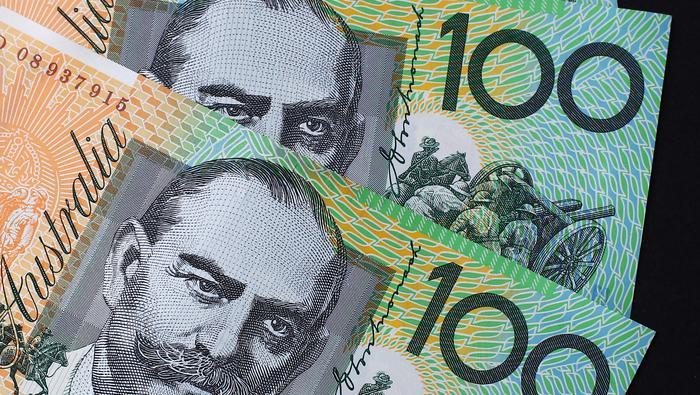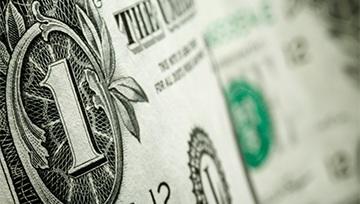2024-07-01 07:34
Euro and CAC 40 Rally After the First Round of French Elections National Rally in poll position but unlikely to win an outright majority. CAC 40 rallies, Euro picks up a bid. The first round of the French elections saw the right-wing National Rally (RN) party pick up nearly 34% of the vote, as widely expected, with the left-wing New Popular Front polling just over 28%, and President Macron’s incumbent alliance placing third with around 21%. While the RN has a possibility of gaining the 289 seats needed to form a government, the latest polls show them falling short by around 10 seats at next Sunday’s second round. The Euro and the CAC 40 have both opened the week in positive territory, buoyed by the fact that the RN may not get into power. The CAC 40 trades 2.5% higher around 7,685 but remains around 550 points below the May 10th high of 8,262. This week will see tactical voting alliances being formed and broken in France, leading to greater volatility in the CAC 40. CAC 40 Daily Price Chart All charts using TradingView The Euro has opened the week higher, although further gains may be muted ahead of next week’s elections. EUR/USD is currently trading around 1.0765, a near three-week high, but looks likely to struggle to push appreciably higher. This week’s sees some important US data releases and events that will direct the pair, with Friday’s US Jobs Report (NFP) the standout. EUR/USD Daily Price Chart Retail trader data shows 50.39% of traders are net-long with the ratio of traders long to short at 1.02 to 1.The number of traders net-long is 10.75% lower than yesterday and 25.08% lower than last week, while the number of traders net-short is 21.60% higher than yesterday and 30.87% higher than last week. We typically take a contrarian view to crowd sentiment, and the fact traders are net-long suggests EUR/USD prices may continue to fall. Yet traders are less net-long than yesterday and compared with last week. Recent changes in sentiment warn that the current EUR/USD price trend may soon reverse higher despite the fact traders remain net-long. What is your view on the EURO – bullish or bearish?? You can let us know via the form at the end of this piece or you can contact the author via Twitter @nickcawley1. https://www.dailyfx.com/news/euro-and-cac-40-rally-after-the-first-round-of-french-elections-20240701.html

2024-06-30 15:00
Australian Dollar Q3 Fundamental Forecast The Australian Dollar will end the year’s second quarter just about where it began against its big brother from the United States. That makes sense, perhaps, given the pervasive uncertainties faced by the global economy which have precluded big trading moves. Moreover, given what we can know now, it must seem unlikely that the coming three months will see a decisive break of current ranges. The strongest force acting on AUD/USD is of course the interest rate differential between the US Federal Reserve and the Reserve Bank of Australia. The optimistic scenario of multiple US interest rate cuts with which markets partied into 2024 is clearly history. There are dissenting voices, of course, but investors will now count themselves lucky if they see even one modest reduction before the end of December. The US economy has proven too resilient to higher rates, inflation has proven too sticky. The problem for those traders who’d likes to see a bit more AUD/USD action is that Australia is in very much the same position. The latest polls show no expectation that the RBA will be trimming borrowing costs this year, as markets price in a potential discussion on the matter for the second half of 2025. There’s still an outside chance that rates could rise again, as there is in the US, but the overwhelming majority sees monetary policy on hold at current, relatively high rates, until inflation durably wilts, followed by a very gradual, data-dependent process of cuts. The upshot of this is that inflation data will remain the markets’ touchstones through the quarter, but absent any major shifts, they’re likely to be stuck with that scenario which could leave AUD/USD with nowhere much to go. Global Growth Looks Healthier, But Major Doubts Remain The other major factor at work for the Aussie is its link to global growth, especially via the commodity price cycle and China, to which Australia famously supplies vast amount of raw material. Here, again, we see enormous uncertainty. Economy watchers such as the World Bank reckon global growth is at last stabilizing for the first time in three years. However, slow recovery from the Covid pandemic, dislocated supply chains, conflicts in Ukraine and Gaza and widespread political uncertainties mean that this stability is fragile. China’s economic momentum is also very clouded, with the real-estate sector still stricken and overall manufacturing momentum very hard to gauge. Keep A Trading Eye on Commodities Still, there are signs that commodity stocks are catching up with some of the broader equity vigor we’ve seen in the past three months, and a better outlook for the sector should probably lend some support to the Aussie. Precious metal prices are forecast to retain their pep too, which might help the currency gain a little further given its correlation to the gold price. However, none of the above represents anything like a sure thing for Aussie bulls, and for as long as the interest rate differentials don’t change, the broad AUD/USD range isn’t likely to either. https://www.dailyfx.com/news/australian-dollar-q3-fundamental-forecast-mixed-aud-outlook-as-china-s-growth-concerns-clash-with-resurgent-aussie-price-pressures-20240630.html

2024-06-30 01:00
The second quarter saw relatively subdued price movements for Bitcoin as demand from spot ETF buyers was counterbalanced by selling from cash holders. As we approach the end of Q2 and the beginning of Q3, Bitcoin is trading slightly lower around the $65,000 level. However, the cryptocurrency is poised for potential upside over the next three months, fueled by expectations of increasing institutional adoption. Spot Bitcoin ETFs Since the launch of various spot Bitcoin ETFs, these products have collectively attracted over $60 billion in inflows. A diverse range of investors, spanning retail and hedge funds, have entered the cryptocurrency market through these regulated investment vehicles. Spot Bitcoin ETFs provide mainstream investors with a convenient way to gain exposure to Bitcoin through their brokerage accounts, albeit with associated management and brokerage fees. Unlike Bitcoin futures ETFs, spot Bitcoin ETFs directly invest in bitcoins as the underlying asset. The recent Bitcoin Halving event, which occurred on April 20th, resulted in a reduction of mining rewards from 6.25 Bitcoins per block to 3.125 Bitcoins. With an average of 144 blocks mined daily, the new supply of Bitcoin entering the system stands at approximately 450 coins per day. As of mid-June, spot Bitcoin ETFs had collectively accumulated nearly 15,000 Bitcoins, significantly overshadowing the mining supply. Bitcoin Mining Cuts Rewards The recent Bitcoin Halving event, which occurred on April 20th, resulted in a reduction of mining rewards from 6.25 Bitcoins per block to 3.125 Bitcoins. With an average of 144 blocks mined daily, the new supply of Bitcoin entering the system stands at approximately 450 coins per day. As of mid-June, spot Bitcoin ETFs had collectively accumulated nearly 15,000 Bitcoins, significantly overshadowing the mining supply. Bitcoin Halving – Supply and Demand While existing holders of Bitcoin, including the prominent Grayscale investment firm, have been instrumental in bridging the supply gap, a potential supply-demand mismatch looms if demand remains constant. The halving event has effectively reduced the rate at which new Bitcoin enters circulation, and if demand persists at current levels or increases, a shortage of available Bitcoin could arise. This supply-demand imbalance, exacerbated by the diminished mining rewards, poses a challenge for the market. Unless existing holders continue to provide liquidity or demand wanes, the scarcity of new Bitcoin could potentially drive prices higher due to the limited supply. Bitcoin Spot EFT Source: Farside Investors Ethereum ETFs – Ready to Roll Towards the end of May, the U.S. Securities and Exchange Commission (SEC) granted approval for key regulatory filings associated with spot Ethereum ETFs. Specifically, the SEC green-lighted the 19b-4 forms related to these ETFs, which represent a crucial step in the approval process. However, before these investment products can become available to investors, the SEC must still provide its blessing for the accompanying S-1 filings. While the approval of the 19b-4 forms is a significant milestone, the final authorization for the spot Ethereum ETFs is contingent upon the SEC's review and approval of the S-1 filings. Market participants anticipate that the SEC will complete this final stage of the approval process in early June, paving the way for investors to gain exposure to Ethereum through these regulated investment vehicles. The impending launch of spot Ethereum ETFs is being closely watched by market participants, as it would provide mainstream investors with a regulated means to gain exposure to the world's second-largest cryptocurrency by market capitalization. Bitcoin & Ethereum – Basic Differences Bitcoin and Ethereum, while both being prominent cryptocurrencies, serve distinct purposes within the broader digital asset ecosystem. Bitcoin was primarily conceived as an alternative to traditional fiat currencies, functioning as a decentralized medium of exchange and store of value, while Ethereum is a programmable blockchain that extends beyond the realm of digital currencies. The approval of Ethereum ETFs will give investors a different avenue, and investment angle, into the cryptocurrency. While Bitcoin remains notably below its all-time high, ongoing Bitcoin ETF demand, new Ethereum ETF demand, and lower BTC mining rewards will continue to underpin both Bitcoin and Ethereum and should see them both hit new all-time highs in the coming months. https://www.dailyfx.com/news/bitcoin-q3-fundamental-outlook-short-term-muddled-longer-term-positive-20240630.html

2024-06-29 11:00
Strong Momentum Likely to Wane in Q3 as the Fed Awaits Incoming Data US equity indices are on track to close out Q2 in positive territory thanks to outperformance from Nvidia, which temporarily saw it claim the title of the largest stock in the US when measured by market cap. Tech-heavy indices like the Nasdaq and S&P 500 have risen over the quarter but the relatively deep pullback at the start of the period has hampered the overall rise during the three-month period. Mega Cap Tech Stocks Q2 Performance (01/04/2024 – 21/06/2024) Source: Rifinitiv, Prepared by Richard Snow The question on everyone’s mind revolves around whether a handful of significant companies will be able to pull US indices higher in the coming quarter considering the current rally is looking less inclusive with fewer stocks trading above their individual 200-day simple moving averages (SMAs). Other considerations include Q2 earnings results which will filter in from July, delayed rate cuts signaled by the Fed, and the run up to the US presidential election. A Less Inclusive Rally is not Necessarily Bearish but can Slow Momentum There has been a lot of discussion around the sustainability of the bullish trend in tech-heavy indices as there has been a drop off in the number of stocks trading above their long-term averages. The measure has dropped from above 80% to less than 68%. As can be seen from the chart below, whenever the percentage of S&P 500 stocks trading above their 200 SMAs drop from 80%, there is more likely than not a further deterioration in share prices for the majority of index. In 2018, 2020 and 2022 the percentage of stocks above their 200 SMAs stalled and reversed, coinciding with a lower reading for SPX at the end of each year. However, as we’ve seen in 2023, stock markets can still rally despite fewer stocks taking part and this is a phenomenon that has become more apparent recently with the rise of Nvidia – taking the total market cap of the top 5 stocks in the index to over 25%. As long as the heavyweight stocks perform well, the index is able to hold up even if the majority of stocks stagnate or experience shallow pullbacks. Measure of Market Breadth for the S&P 500 (% of SPX stocks trading above their 200 SMAs) Source: Barchart, prepared by Richard Snow Q2 Equity Earnings and The Fed Delays Rate Cuts due to Inflation Concerns US earnings season for the second quarter kicks off in the first week of July and appears likely to mirror the generally positive results witnessed over Q1. In fact, analysts have slightly raised their full year forecast for earnings growth from 11.2% to 11.3% in 2024 in stark contrast to the meagre 1% figure that materialised in 2023. S&P 500 Projected Earnings Growth 2024 by Sector Source: FactSet, prepared by Richard Snow The longer-term outlook appears positive, with double digit earnings growth expected to extend into 2025, increasing the likelihood of a soft landing when the Fed eventually acquires sufficient confidence to lower the interest rate. Thus far equity markets have proven robust, printing all-time highs despite rate cuts constantly being pushed back due to stubborn inflation. The Fed raised its inflation expectations when the updated forecasts were released at the June FOMC meeting and indicated that it plans to lower the Fed funds rate just once this year, down from three projected in March but the decision between one or two cuts was a very close one. Markets recently underwent a hawkish repricing (as seen in the chart below), which could keep equity gains capped in Q3 before the picture changes in Q4 when that first Fed cut is anticipated. Inflation prints for June and July will be crucial in the assessment of a potential cut in September, but for now, markets fully price in a cut by November. If this remains the case, Q3 may see limited gains on the equity front with indices rising towards the end of the quarter unless the September FOMC meeting becomes more favourable. Such a scenario is likely to buoy equities sooner. Keep in mind the independent Fed typically avoids policy adjustments in an election month to distance itself from any accusations of political interference. That leaves September and December as the only viable months if we are to get two rate cuts this year. Implied Yield for CBoT 30-Day Fed Funds Futures Curves Source: Rifinitiv, Prepared by Richard Snow What Does Seasonality in an Election Year Reveal for the S&P 500? Generally speaking, election years are great for the stock market. Data going as far back as 1949 sees a typical election year adding around 7% on average, while years involving a sitting president running for reelection have climbed nearly 13% on average. We’re only halfway through 2024 and already seeing gains of 15% towards the end of June. July and August tend to consolidate or exhibit a slight rise before September sees a broader continuation of the yearly bull trend. If incoming inflation data shows significant progress, the seasonal uptick in the S&P 500 in September may coincide with an increased expectation of a full 25 basis point cut from the Fed. Seasonal Trajectories for the S&P 500 under Different Scenarios During an Election Year Source: Hirsch Holdings Inc, X via @AlmanacTrader Fundamental Summary for Equities in Q3: The outlook for US indices is still bullish, but headwinds like stubborn inflation data, inflation expectations, a less inclusive rally, and a seasonal consolidation limit the extent that indices are likely to rise in Q3. One last thing to note according to the latest Bank of America Global Fund Manager Survey is that investor sentiment is overwhelmingly positive, with 64% of respondents predicting a ‘soft landing’ and 26% indicating a ‘no landing’ scenario. https://www.dailyfx.com/news/equities-q3-fundamental-outlook-bullish-momentum-to-slow-20240629.html

2024-06-28 21:00
The US dollar is likely to drift lower, driven by softer economic data which appears to be paving the way for a rate cut later this year. However, a strong economy means the US public may have to wait longer than other developed countries before it can start to lower interest rates. Over the next three months, the dollar is expected to ease but the journey is likely to be choppy due to a robust inflation outlook from the Fed whereby it anticipates only reaching the 2% target in 2026. Growth, Inflation, and the Labour Market – A Real Mixed Bag Economic growth is moderating but still robust, disinflation is back on track, and the job market shows small signs of easing despite a massive NFP beat in May. The Fed is hopeful that the strong labour market will usher in a soft landing when it does eventually decide to cut rates with Q3 potentially marking the start of the rate cutting cycle if the data allows (September). Should growth deteriorate alongside the continued progress in inflation, US shorter-term yields have room to fall further and could weigh on the dollar. One risk to the lower growth trend appears via the Atlanta Fed’s GDPNow forecast which suggests Q2 GDP is on track to bounce back to 3% (as of June 20th). US GDP Growth (Quarter-on-Quarter) Source: Refinitiv, prepared by Richard Snow US Inflation Back on the Right Path At the centre of the data will be inflation which declined in the first half of the year despite a spate of troubling core CPI prints (month-on-month) that weighed on Fed officials’ confidence of reaching 2% in a timeous manner. Thanks to improved data in April and May, the Fed will likely look for more encouraging signs in the coming months in the hope to build the necessary confidence to finally cut interest rates once or even twice this year. US Core CPI (Month-on-Month) Source: Refinitiv, prepared by Richard Snow Headline and core measures of both CPI and PCE versions of inflation are heading lower. At the time of writing the US PCE data for May has not yet been released but it is expected to be contained, much like the CPI data. As such, markets may start to fully price in two rate cuts in 2024 which is likely to weigh on the greenback. Services inflation remains a blemish on an otherwise positive scorecard for the Fed and could keep the dollar supported in the absence of any meaningful declines in the reading. US Inflation Continues Lower Source: Refinitiv, prepared by Richard Snow US Labour Market Shows Signs of Easing The labour market has shown signs of easing via downward trending job openings, job hires and job quits but progress has been limited. NFP data revealed another shock to the upside as more people found jobs in May than originally anticipated. However, the lift was not enough to stop the unemployment rate from rising to the 4% handle. Job openings, job quits, job hires, NFP Source: Refinitiv, prepared by Richard Snow https://www.dailyfx.com/news/us-dollar-q3-fundamental-outlook-us-dollar-to-soften-as-fundamental-outlook-eases-20240628.html

2024-06-28 13:00
US Dollar Index (DXY) Listless After Core PCE Meet Forecasts Core PCE y/y and m/m met market forecasts. US dollar quiet post-data, US non-farm payrolls (July 5th) the next driver. US Dollar Slips After US Durable Goods, Jobs Data – US Q1 GDP Meets Forecasts The US dollar barely moved after the release of the highly-anticipated US Core PCE data as all readings met market forecasts. Core PCE y/y fell to 2.6% from 2.8% in April, while the m/m reading feel to 0.1% from a prior reading of 0.3%. Month-end and quarter-end rebalancing flows may shift currencies going into the weekend. Attention now turns to next week, where the monthly US Jobs Report (Friday July 5th) will hold sway. US markets are closed on Thursday to celebrate July 4th, so next week’s NFPs may not get the usual attention they command as traders extend their Independence Day holiday. The US Dollar Index is flat on the day after attempting to print a new multi-week high earlier in the session. The daily chart shows the DXY continuing to post higher lows and higher highs since the end of last year, and if this sequence continues then the double high made in mid-April and early May will be tested in the short-term. US Dollar Index Daily Chart Chart using TradingView What are your views on the US Dollar – bullish or bearish?? You can let us know via the form at the end of this piece or contact the author via Twitter @nickcawley1. https://www.dailyfx.com/news/us-dollar-index-dxy-listless-after-core-pce-meet-forecasts-20240628.html
